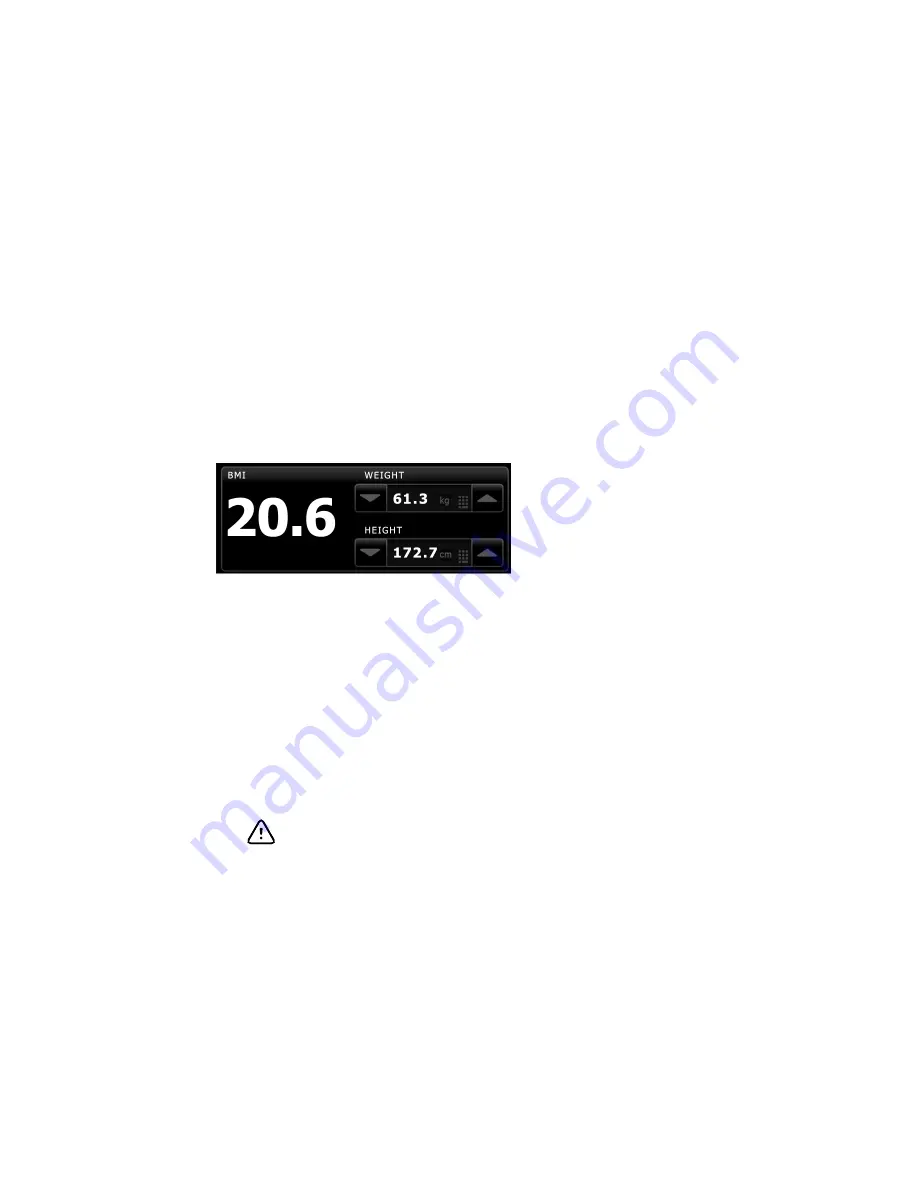
The program establishes the baseline reading as follows:
•
At the start of the program, Reading 1 is the baseline reading.
•
The program compares the systolic value of Reading 2 to the systolic value of
Reading 1.
•
If the difference between the values is within the "Keep baseline" range, Reading 1
remains the baseline. The program compares the next reading to Reading 1, and so
on.
•
If a reading is outside the range, that reading becomes the new baseline, and the
program excludes from the average all readings that preceded the new baseline.
•
After establishing a new baseline, the program compares subsequent readings to
the new baseline and applies the rules described above.
BMI frame
The BMI frame displays body mass index (BMI), weight, and height.
Note
This frame is available only in the Office profile.
Weight and height measurements can be entered manually or transferred from an
attached weight scale. The profile calculates BMI based on weight and height input.
Note
When a weight or height measurement is transferred from an attached
weight scale to the monitor, the measurement displayed on the monitor is
within one decimal place (0.1) of the measurement displayed by the weight
scale.
Enter weight and height
The BMI frame enables you to enter weight and height measurements taken manually,
and it displays weight and height measurements taken by an attached weight scale.
CAUTION
Weight scales attached to this monitor must be running on
battery power (battery type is specified in the weight scale manufacturer's
directions for use). Do not use the weight scale's external power supply.
1. Verify that you are using the Office profile.
2. From the Home tab, touch the up/down arrow keys or the keypad to manually adjust
weight and height.
Note
If an approved, battery-powered weight scale is attached to
the monitor, weight and height measurements from the
weight scale populate fields in the BMI frame.
The BMI value changes based on weight and height input.
Pain frame
In the Pain frame, you can manually enter the patient's pain level.
Directions for use
Patient monitoring 149
Summary of Contents for Connex IWS
Page 1: ...Welch Allyn Connex Devices Directions for use Software version 2 3X...
Page 10: ...4 Introduction Welch Allyn Connex Devices...
Page 14: ...8 Symbols Welch Allyn Connex Devices...
Page 20: ...14 Screen elements Welch Allyn Connex Devices...
Page 28: ...22 About warnings and cautions Welch Allyn Connex Devices...
Page 72: ...66 Navigation Welch Allyn Connex Devices...
Page 96: ...90 Profiles Welch Allyn Connex Devices...
Page 106: ...100 Patient data management Welch Allyn Connex Devices...
Page 120: ...114 Alarms Welch Allyn Connex Devices...
Page 184: ...178 Patient monitoring Welch Allyn Connex Devices...
Page 212: ...206 Advanced settings Welch Allyn Connex Devices...
Page 244: ...238 Specifications Welch Allyn Connex Devices...
Page 250: ...244 Standards and compliance Welch Allyn Connex Devices...
Page 252: ...246 Guidance and manufacturer s declaration Welch Allyn Connex Devices...
Page 266: ......






























